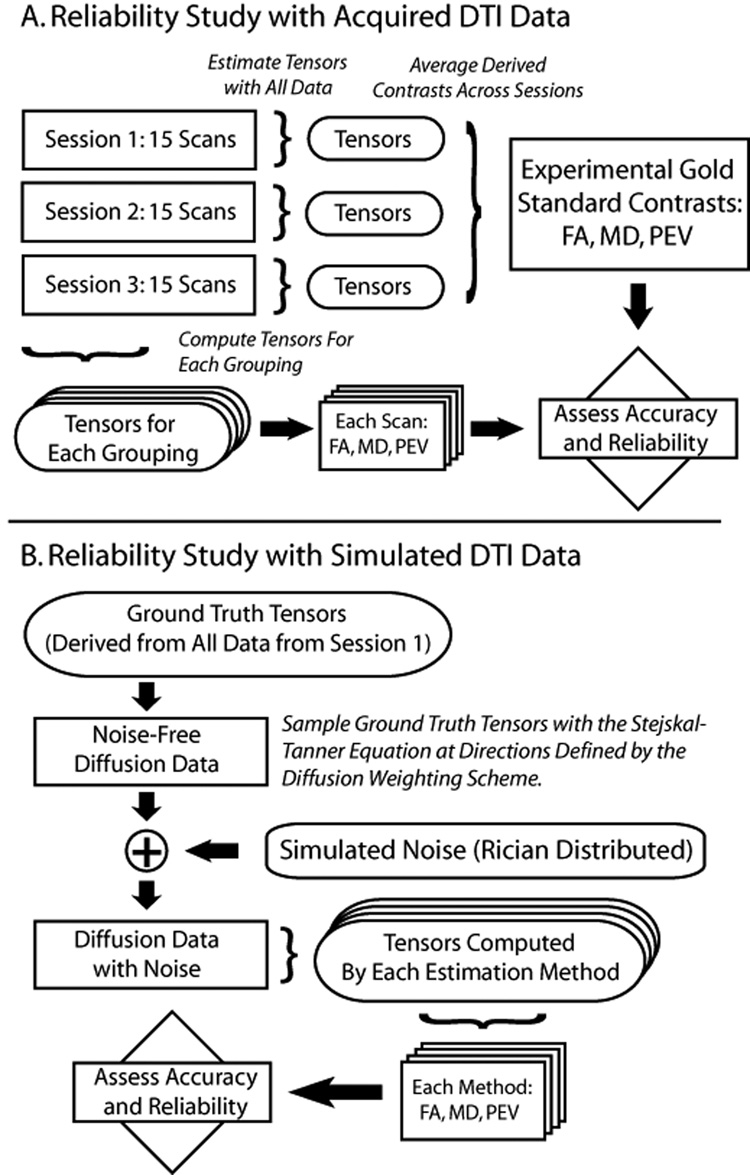Diffusion Tensor Imaging at Low SNR: Non-monotonic behaviors of tensor contrasts
B. A. Landman, J. Farrell, H. Huang, J. Prince, and S. Mori. “Diffusion Tensor Imaging at Low SNR: Non-monotonic behaviors of tensor contrasts”, Magnetic Resonance Imaging. 26(6):790-800. July 2008 PMC2583784
Full text: https://www.ncbi.nlm.nih.gov/pmc/articles/PMC2583784/
Abstract
Diffusion tensor imaging (DTI) provides measurements of directional diffusivities and has been widely used to characterize changes in tissue micro-architecture in the brain. DTI is gaining prominence in applications outside of the brain where resolution, motion, and short T2’s often limit the achievable SNR. Consequently, it is important to revisit the topic of tensor estimation in low SNR regimes. A theoretical framework is developed to model noise in DTI, and by using simulations based on this theory, the degree to which the noise, tensor estimation method, and acquisition protocol affects tensor-derived quantities, such as fractional anisotropy and apparent diffusion coefficient, is clarified. These results are then validated against clinical data. It is shown that reliability of tensor contrasts depends on the noise level, estimation method, diffusion weighting scheme, and underlying anatomy. The propensity for bias and errors is not monotonically increasing with noise. Comparative results are shown in both graphical and tabular form so that decisions about suitable acquisition protocols and processing methods can be made on a case-by-case basis without exhaustive experimentation.
